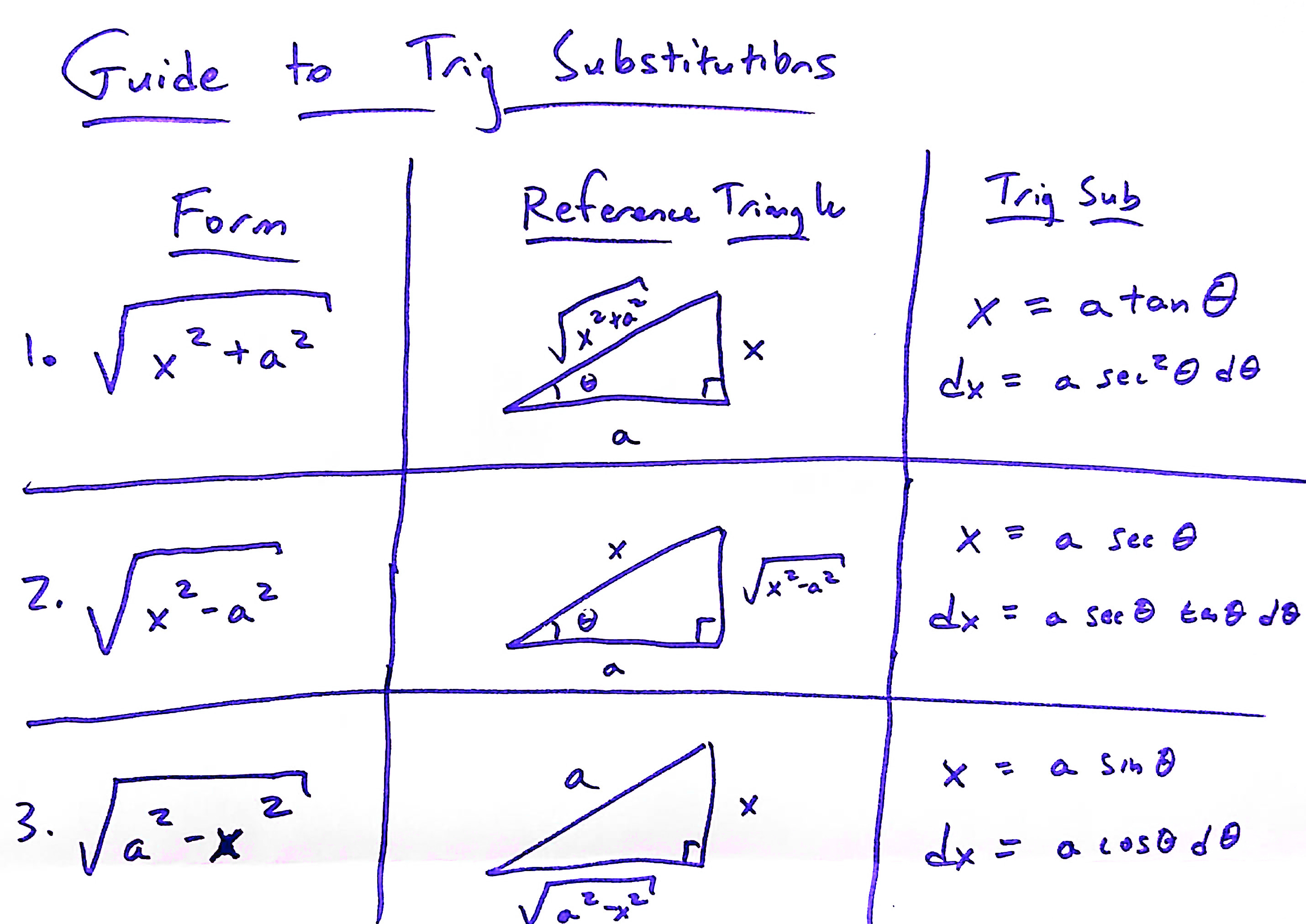
Today we introduced Integration by Parts. Here’s one video example of I-by-P. And here is another longer video with a good explanation. We did these in-class examples:
\(\displaystyle \int x \sin x \, dx\).
\(\displaystyle \int x^2 \ln x \, dx\).
\(\displaystyle \int \ln x \, dx\).
\(\displaystyle \int \arctan x \, dx\).
\(\displaystyle \int t^2 e^t \, dt\).
The last example requires integration by parts twice. An easier way to do integration by parts in this situation is tabular integration. We finished with one final tabular integration problem:
Here is a strange video of someone teaching the tabular method.
Today we talked about trigonometric integrals. Before starting, we did a classic tricky integration by parts problem. You can see a solution to this problem here.
Then we did several examples of trigonometric integrals. We followed the book pretty closely on this, so I’d recommend reading section 7.2. If you prefer videos, here’s a pretty good video explanation.
\(\displaystyle \int \cos^3 x \sin^2 x \, dx\)
\(\displaystyle \int \sin^3 x \, dx\)
\(\displaystyle \int \tan^6 x \sec^4 x \, dx\)
\(\displaystyle \int \tan^3 x \sec^7 x \, dx\). Hint: let \(u = \sec x\). Keep a \(\sec x \tan x\) factor to become the \(du\).
\(\displaystyle \int \frac{ \sec x}{\tan^2 x} \,dx\). Hint switch everything to sines and cosines first.
All of these problems could be solved with u-substitution and the two basic trig identities:
Then we talked about the trigonometric product identities:
A special case of the trig product identities are the half-angle formulas
We used these identities to evaluate:
\(\displaystyle \int \sin^2 x \, dx\).
\(\displaystyle \int \sin(8x) \cos(6x) \, dx\).
Today we introduced the idea of trigonometric substitutions. Here is a video example of the idea from Kahn academy:
We did the following examples in class:
\(\displaystyle \int \frac{dx}{(x^2+1)^{3/2}}\).
\(\displaystyle \int \frac{\sqrt{x^2-9}}{x} \, dx\).
\(\displaystyle \int \frac{x^2}{\sqrt{1-x^2}} \, dx\). (This integral comes up when you do I-by-P on \(\displaystyle \int x \arcsin x \, dx\))
\(\displaystyle \int \frac{1}{25+x^2} \, dx\).
In class, I made the following table with guidelines on how to make reference triangles based on the form of the function you are trying to integrate.
